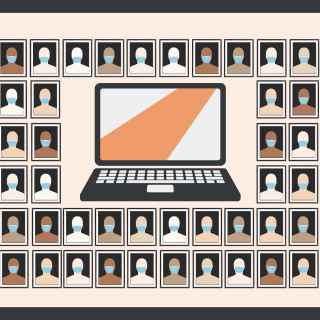“Hello. This is John Doe. Interested in data?”
In 2014, the German newspaper Sueddeutsche Zeitung received his message. Two reporters, Bastian Obermayer and Frederik Obermaier, decided to check it out, intending for the project to be a “lone-wolf” investigation.
But after receiving 11.5 million documents, they realized it would have taken years just to sift through it all. In fact, the reporters would only be able to go through 3 million files a year if they looked at one file every 10 seconds, according to Emilia Díaz-Struck, research editor at the International Consortium of Investigative Journalists (ICIJ).
This data came in the form of emails, text documents and images — that were not searchable. So the reporters decided to turn to ICIJ.
The ICIJ partnered with about 100 media outlets to pursue the story.
Eventually, 370 journalists from 76 countries got involved. They decided this was more than just collectively sharing the documents — they needed digital tools to facilitate collaboration and make the data easily understandable.
Some of these digital tools did not exist before the investigation. Now, these tools, including the Global I-HUB, Blacklight, Linkurious and the Organized Crime and Corruption Reporting Project (OCCRP), are being used to report and collaborate on other investigative projects, said speakers at Thursday’s session on the Panama Papers, or How To Coordinate a Secret in the Digital Age.
“We were actually innovating while we were collaborating,” Díaz-Struck said.
ICIJ created the Global I-HUB, which is similar to “a private Facebook for journalists,” Díaz-Struck said. The reporters were able to share findings and information from sources to make sense of the documents, which enabled them to find the news story and angles behind the data through the encrypted system.
The team also uploaded all the data to a database software called Blacklight, which enabled them to filter the documents by file types, making it easier to extract. This allowed for the reporters to search through the documents to find the politicians involved.
Linkurious, a visualization tool, digitalized the connections of companies to shareholders — this was how they connected Iceland’s former Prime Minister Sigmundur Gunnlaugsson to the offshore company he bought in 2007.
The OCCRP, a search engine for investigative journalists, helped filter, find and track information related to the Panama Papers data for media organizations to collaborate with one another on similar projects, said Justin Arenstein, director of Code for Africa. The OCCRP alerts media organizations of similar projects other media organizations are doing to suggest a collaboration. Arenstein compared OCCRP to Google Alerts — however, instead of news alerts, the matches focus on data and collaboration.
Other organizations outside of the Panama Papers are now using these tools to tackle investigative stories internationally. But despite how critical digital tools are to the project, they don’t replace the heart of investigative journalism.
“You get these wonderful kinds of leads, like the ones in the Panama Papers, where massive amounts of documents are made available and they immediately give you a lead,” Arenstein said. “They don’t replace investigative journalism. You still need to do real slug work and footwork to ensure that the documents mean what you think they mean.”





